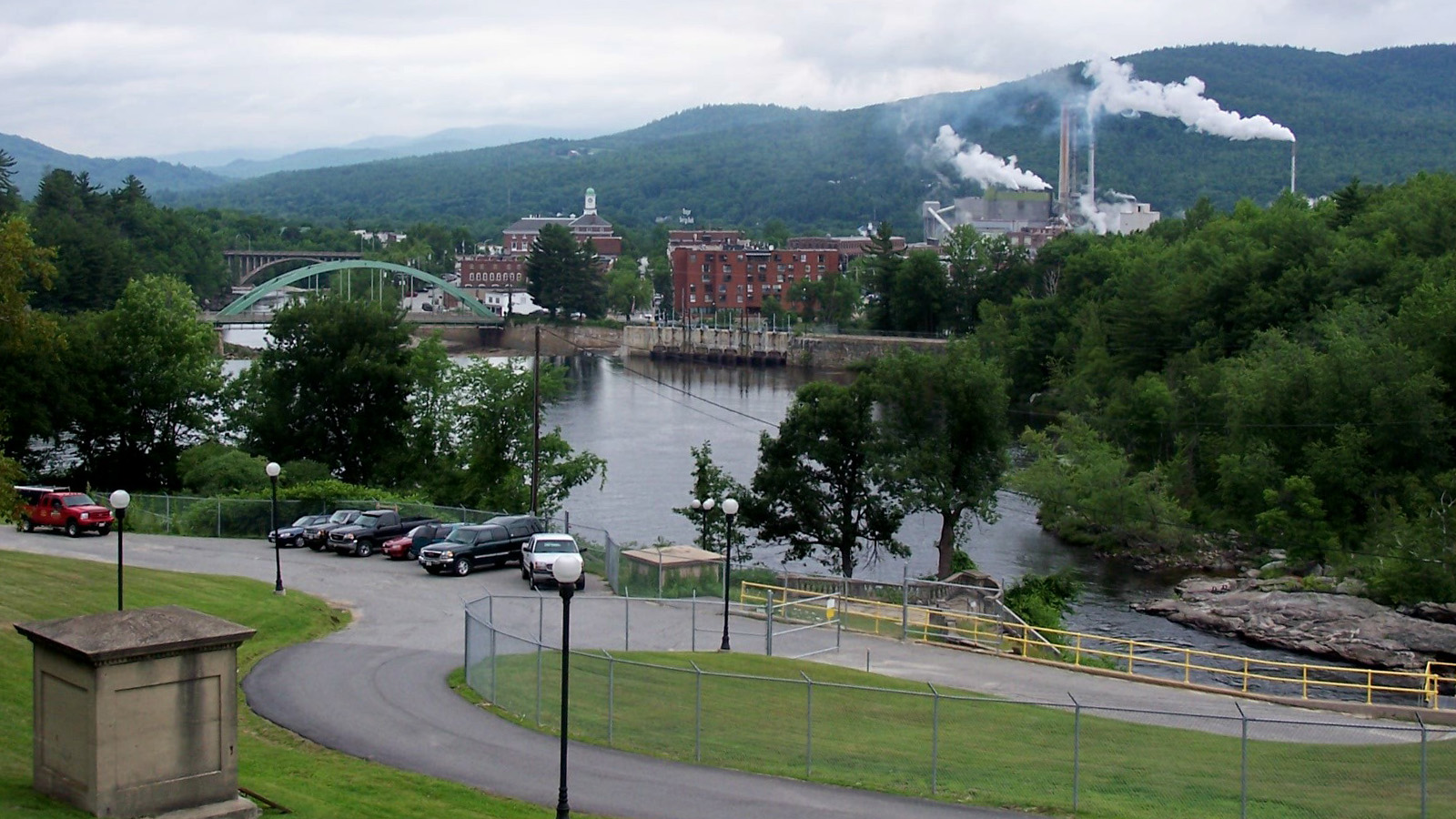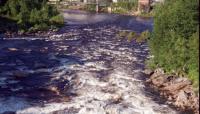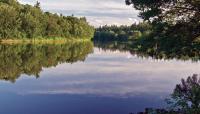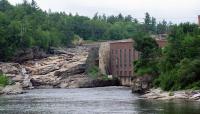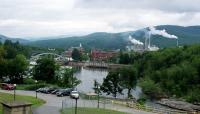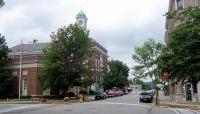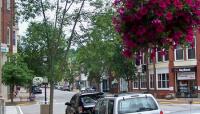At the confluence of the Swift and Androscoggin Rivers, Rumford has the greatest waterfall drop (177 feet) east of Niagara Falls. Around 1890, Canadian entrepreneur Hugh Chisholm purchased over 1,400 acres surrounding the falls with the intention of creating a working-class mill town using the state’s water and lumber resources. He hired civil engineer Edward A. Buss to survey and lay out the new town, including thirty riverfront mill sites, over 1,000 house lots, and land for schools, churches, parks, and public buildings. Chisholm promoted Rumford’s natural scenic amenities to potential workers and business owners.
The majority of the town is laid out along the Androscoggin River just north of the falls, with streets aligned parallel to the river in long, linear blocks. Residential neighborhoods include simple brick three-story apartment buildings, blocks of more ornate, brick, three-story buildings adorned with quoins, lintels, and ornamental porches, and rows of matching, single-family homes along the highest elevations. Today, about 6,500 people live in Rumford and its villages. While the town has suffered the boom-and-bust cycles of the paper industry it has never experienced a period of urban renewal and therefore retains much of its historic architecture and character. Strathglass Park, the most historically significant and intact neighborhood of worker housing in Rumford, was listed in the National Register of Historic Places in 1974.




